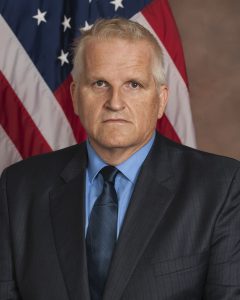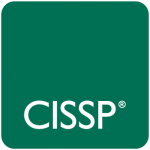Dr. Kallberg’s research is focused mainly on cyber-supported strategic surprise, hidden single points of failure, attack surfaces that we don’t see due to bias, technology developments, and organizational inertia, increased velocity in engagements driven by AI and sensors, cyber defense, and how cyber impacts societal norm stability/destabilization.
Dr. Kallberg is a Senior Fellow with the Transatlantic Defense and Security program at the Center for European Policy Analysis (CEPA).

Prior to CEPA, Dr. Jan Kallberg was a Professor at the United States Military Academy at West Point and a scientist in an agency-sponsored insider threat research program.
He spent seven years at the Army Cyber Institute at West Point as a research scientist in the Cyber Operations Research Element working with solution creation, threat identification, and critical thinking to fast-evolving issues. Kallberg was a researcher at the Cyber Security Research and Education Institute under the guidance of Dr. Bhavani Thuraisingham, the University of Texas at Dallas, an Assistant Professor at Arkansas Tech University, and part-time faculty at George Washington University and the New York University (NYU). Dr. Kallberg is certified CISSP and CISM. He also serves as the Managing Editor for the Cyber Defense Review.
When he registered cyberdefense.com as his domain in 1997, there were four (4) references on the Internet (Altavista) to cyber defense. Today, it is a million or more. A small claim of being ahead of time.
Dr. Kallberg has been published in Joint Forces Quarterly, Strategic Studies Quarterly, Air and Space Power Journal, Military Review, IEEE IT-Professional, IEEE Security & Privacy, IEEE Technology & Society, and IEEE Access.
Dr. Kallberg served a six-year term (term limit) on the editorial board for IEEE Access.
Read Jan Kallberg, Ph.D., the latest column in C4ISRNET (Defense News).
IN MY OWN WORDS

For any advanced attacker, AI is a highly inviting attack vector because few know what goes on under the hood; there is a blind belief, that events will unfold at a velocity that severe damage can be done before the target identifies the events that unfold.
I spend quite a bit of time thinking about cyber five-eight years from now. I believe that beyond ten years is inaccurate and tends to be science fiction. More than five years is too close because it takes a few years to establish an argument that something matters and anchor it in large organizations.
It is easier said than done to look five-eight years ahead, so I have a methodology I have developed where I read and compare multiple information sources. I also try to stay away from being engaged and submerge myself in too many current issues and microdetails, but instead, I try to see trends, directions, and developments. What’s next? What is driving this? Who has something to gain? What is at stake?
I try to reverse the “paradigm” and look for opportunity where the main and established argument is that there is no opportunity and just overwhelming threats and risk. On the other hand – when the “paradigm” signs its praise, for the moment AI and Machine Learning, I try to see what can go wrong or what is the attack vector that is generally ignored. I like it. It is intellectually challengeing.
My research program was initially focused on the intersection between cyber policy and the broader impact on our open society. I also seek to explore cyber as a policy option in national security in both defensive and offensive postures. The program has continued to investigate the effects of accelerated warfare (hyper war), cyber-driven strategic surprise, the confluence of information operations and cyber, the impact of reaching machine speed executions, and unorthodox ways to gain an early cyber advantage in a peer-to-peer conflict.
I firmly believe that we overestimate totalitarian and authoritarian regimes ability to ensure regime survival in a strategic cyber conflict – and by doing so we underestimate the free democracies inheret resiliency and ability to take a punch and still be standing.
Methods:
Evaluation of claims and argument, technical evaluation, document review, logic reasoning.

ISC2 CISSP #584765 ISACA CISM #1839585
